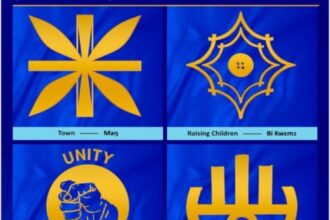Historians recently made an astonishing discovery of a rare 13th-century document that sheds light on the tales of King Arthur and Merlin. The manuscript, part of the Suite Vulgate du Merlin, offers a French-language version of the legendary story of King Arthur.
The University of Cambridge unveiled this remarkable find on March 25, highlighting the miraculous survival of the document. King Arthur, a figure steeped in legend for centuries, has often been debated by historians regarding his actual existence.
The fragile manuscript, dating back to the 13th century, was unexpectedly found in the binding of an old book in a Cambridge library in 2019. Remarkably, it had been repurposed as the cover for a property record from Huntingfield Manor in Suffolk during the 1500s, owned by the Vanneck family of Heveningham.
Despite being folded, torn, and stitched into the binding of the book, modern technology such as multi-spectral imaging, computed tomography, and 3D modeling allowed experts to scan and create a virtual image of the manuscript without causing any damage to it. Through meticulous digital reconstruction, the team at the Cultural Heritage Imaging Laboratory managed to piece together the fragmented text, providing a coherent view of the document.
Each copy of the Suite Vulgate du Merlin was unique, handwritten by medieval scribes, with less than 40 known copies in existence. The Cambridge copy, penned between 1275 and 1315, is written in Old French, the language of the court and nobility in medieval England post-Norman Conquest.
The manuscript contains two key episodes from the end of the Suite Vulgate du Merlin. The first recounts the Christians’ victory over the Saxons at the Battle of Cambénic, featuring Gauvain and King Loth’s fight against the Saxon Kings. The second passage depicts a courtly scene at Arthur’s court during the Feast of the Assumption of the Virgin Mary, with Merlin disguised as a harpist, showcasing his magical prowess and advisory role to the king.
A translated passage from the document vividly describes a scene from medieval England, where a handsome man arrives at King Arthur’s court during a feast, bedecked in silk and precious stones. Despite minor errors in the text, such as the misnaming of the Saxon king Dorilas, these discrepancies serve as valuable clues for experts to trace the manuscript’s lineage.
The University of Cambridge highlighted the manuscript’s intricate details, including decorated initials in red and blue, indicating its origins in the late 13th to early 14th century. This extraordinary find provides a unique glimpse into the Arthurian legends and the medieval world, offering valuable insights into the literary and cultural heritage of the time.








